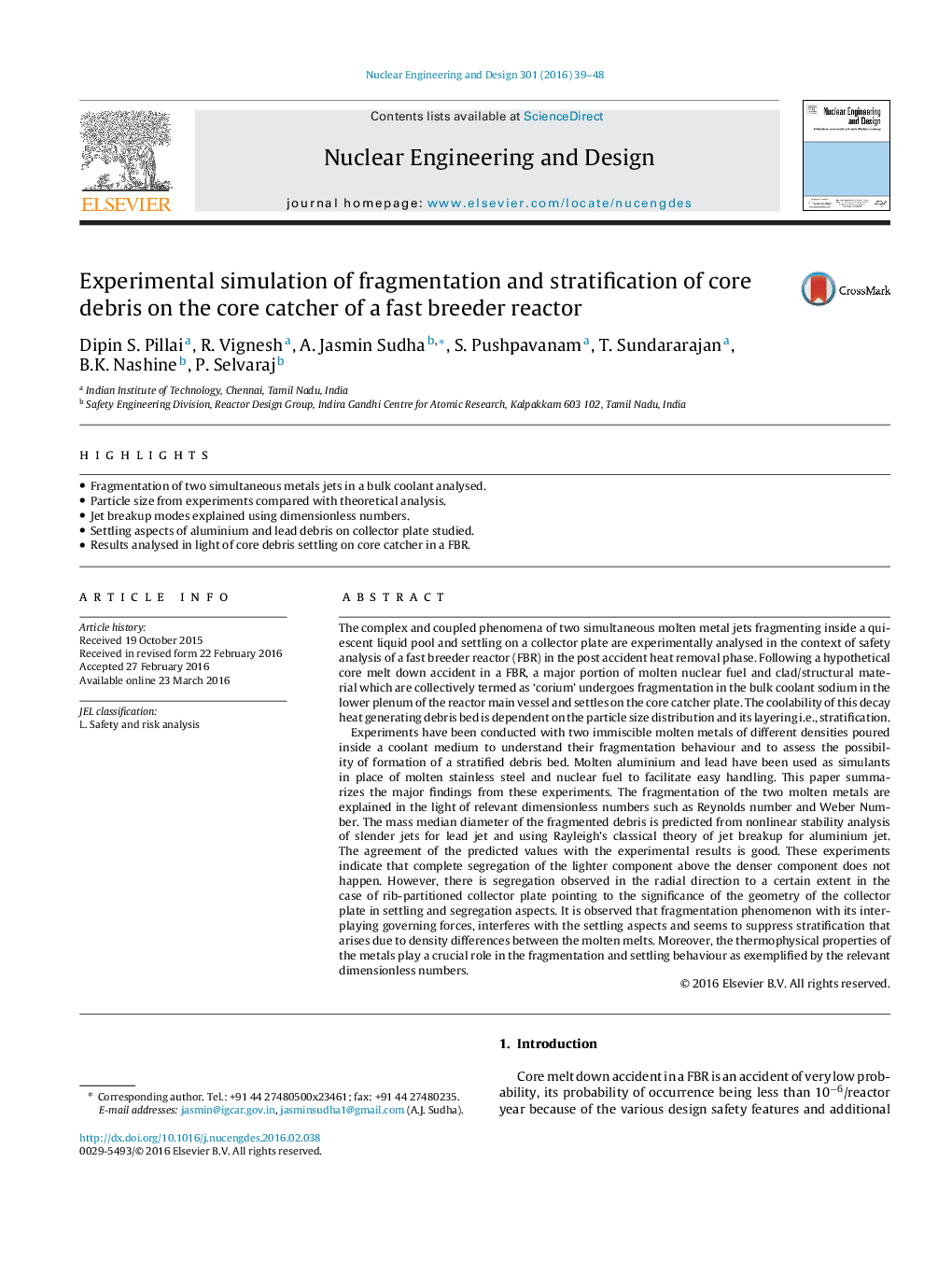| Article ID | Journal | Published Year | Pages | File Type |
|---|---|---|---|---|
| 295963 | Nuclear Engineering and Design | 2016 | 10 Pages |
•Fragmentation of two simultaneous metals jets in a bulk coolant analysed.•Particle size from experiments compared with theoretical analysis.•Jet breakup modes explained using dimensionless numbers.•Settling aspects of aluminium and lead debris on collector plate studied.•Results analysed in light of core debris settling on core catcher in a FBR.
The complex and coupled phenomena of two simultaneous molten metal jets fragmenting inside a quiescent liquid pool and settling on a collector plate are experimentally analysed in the context of safety analysis of a fast breeder reactor (FBR) in the post accident heat removal phase. Following a hypothetical core melt down accident in a FBR, a major portion of molten nuclear fuel and clad/structural material which are collectively termed as ‘corium’ undergoes fragmentation in the bulk coolant sodium in the lower plenum of the reactor main vessel and settles on the core catcher plate. The coolability of this decay heat generating debris bed is dependent on the particle size distribution and its layering i.e., stratification.Experiments have been conducted with two immiscible molten metals of different densities poured inside a coolant medium to understand their fragmentation behaviour and to assess the possibility of formation of a stratified debris bed. Molten aluminium and lead have been used as simulants in place of molten stainless steel and nuclear fuel to facilitate easy handling. This paper summarizes the major findings from these experiments. The fragmentation of the two molten metals are explained in the light of relevant dimensionless numbers such as Reynolds number and Weber Number. The mass median diameter of the fragmented debris is predicted from nonlinear stability analysis of slender jets for lead jet and using Rayleigh's classical theory of jet breakup for aluminium jet. The agreement of the predicted values with the experimental results is good. These experiments indicate that complete segregation of the lighter component above the denser component does not happen. However, there is segregation observed in the radial direction to a certain extent in the case of rib-partitioned collector plate pointing to the significance of the geometry of the collector plate in settling and segregation aspects. It is observed that fragmentation phenomenon with its interplaying governing forces, interferes with the settling aspects and seems to suppress stratification that arises due to density differences between the molten melts. Moreover, the thermophysical properties of the metals play a crucial role in the fragmentation and settling behaviour as exemplified by the relevant dimensionless numbers.
